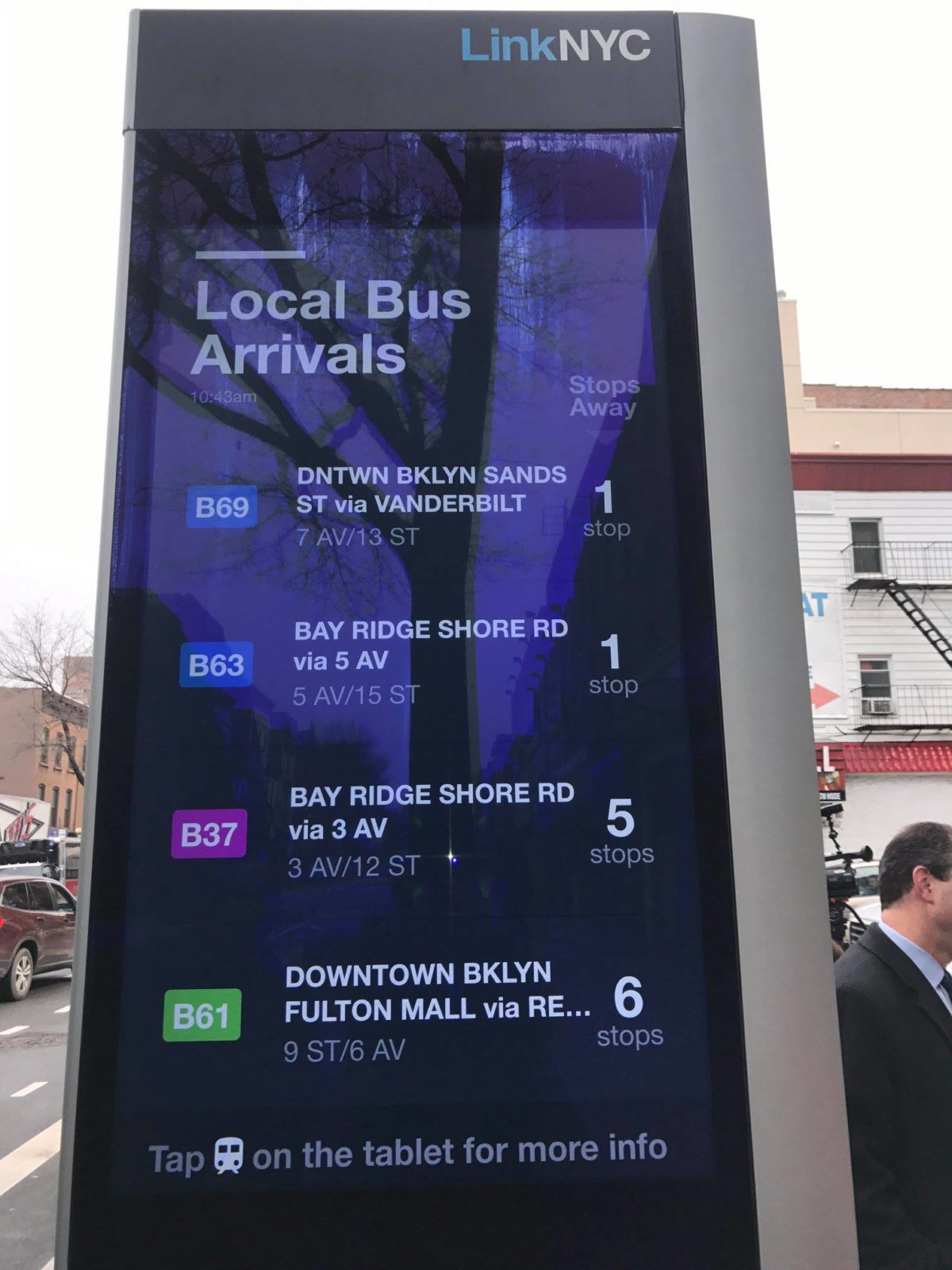LinkNYC kiosks across the five boroughs will show countdown clocks for nearby buses, thanks to a multi-party agreement between city departments, projects and a councilman.
Twenty-nine kiosks will show the countdown clocks as part of their screen displays in Brad Lander’s District 39, to be followed by kiosks in districts in all five boroughs in the coming weeks, the city’s Department of Information Technology and Telecommunications (DoITT) announced Wednesday.
“It’s a modest but meaningful improvement,” Lander, who represents Park Slope, Gowanus, Carroll Gardens and Borough Park, told Technical.ly by phone Thursday. “It’s a lot easier to be a bus rider if you know when the bus is coming.”
Thrilled to help @LinkNYC kiosks become bus countdown clocks! Big thanks to @LinkNYC & @NYCDoITT for making it happen & @CMPeterKoo @CIO_Saini @JenMarieHensley @noneck @PkSLCivCouncil for joining us. Makes taking the bus a little bit better! https://t.co/ZY624f7Yhw pic.twitter.com/G1oCIdyWoq
— Brad Lander (@bradlander) April 4, 2018
Lander told Technical.ly in February about a pilot of the idea in his district. He said the idea for bus countdown clocks came out of participatory budgeting suggestions in years past but that it’s a complicated and expensive process, with the price for each standalone countdown clock at about $35,000. The LinkNYC kiosks seemed like they could be a quick fix for getting that functionality.
The LinkNYC kiosks, which provide free WiFi for nearby users, are paid for primarily by the ads that appear on the screens on the sides of them. There is some time set aside for use of those screens by the city on some of the kiosks, but Lander said that, along with DoITT, the parties agreed to post the countdowns in place of some ad time and without compensation from the city.
“The nice thing was that Link agreed this would be valuable content to provide. Obviously, they want these things to be valuable things to look at, so they’re putting it up in ‘their’ time,” Lander explained. “If they don’t become things people want to look at, that will be self-defeating because no one will be looking at them. If it helps New Yorkers, they’ll be looking at the Links, thus making the ad space more valuable.”
Lander said he doesn’t immediately have any other ideas for using technology to improve city life, but noted that he didn’t have this idea in the first place exactly, either.
“I don’t think the answer is that elected officials will have great tech ideas for how to improve the city, but that we have a lot of people with ideas, such as how to make it a little easier to wait for the bus. I’m looking forward to a lot more of those ideas,” he said.
From where we sit, there’s no shortage of ideas for civic tech. The pain point often occurs where implementation with government departments and organizations. That Lander was able to actually get several parties to sit down and agree to this and implement it in a pretty quick time period might be the most innovative part of this whole project.
Join the conversation!
Find news, events, jobs and people who share your interests on Technical.ly's open community Slack
